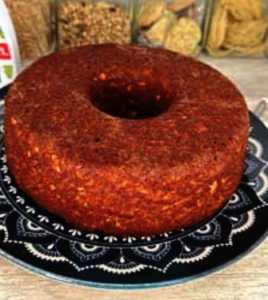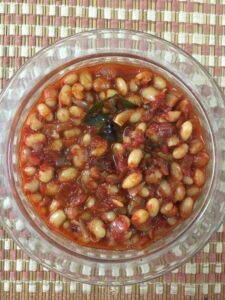Cassava cake is a traditional dessert that has its roots in the Philippines, where it is known as “kakanin.” It is made from cassava root, also known as yucca or manioc, which is a starchy, tuberous root vegetable that is widely cultivated in tropical regions.
Cassava cake is believed to have been introduced to the Philippines during the Spanish colonial period, when cassava was brought over from South America. Over time, the recipe for cassava cake evolved to include coconut milk, eggs, sugar, and other ingredients, resulting in the sweet and decadent dessert we know today.
In addition to its rich cultural history, cassava cake also has some interesting health benefits. Cassava is a good source of fiber, vitamins, and minerals, including vitamin C, calcium, and iron. It is also gluten-free, making it a great option for those with gluten sensitivities or celiac disease.
One of the key ingredients in cassava cake is coconut milk, which is rich in healthy fats and can help to improve heart health and reduce inflammation. Additionally, coconut milk contains lauric acid, which has antibacterial and antiviral properties.
Another interesting fact about cassava cake is that it is often served during special occasions, such as weddings and religious holidays, in the Philippines. It is also a popular street food and can be found at markets and food stalls throughout the country.
Overall, cassava cake is a delicious and unique dessert with a rich cultural history and some surprising health benefits.

Ingredients:
- 2 cups grated cassava (fresh or frozen)
- 1 can (14 oz) condensed milk
- 1 can (13.5 oz) coconut milk
- 3/4 cup granulated sugar
- 3 eggs
- 1/4 cup melted butter
- 1/2 teaspoon vanilla extract
- Grated cheese for topping (optional)
Instructions:
- Preheat your oven to 350°F (180°C).
- In a mixing bowl, combine the grated cassava, condensed milk, coconut milk, sugar, eggs, melted butter, and vanilla extract. Mix well until all ingredients are fully incorporated.
- Grease a 9-inch baking dish with butter or cooking spray. Pour the cassava mixture into the dish.
- Bake the cassava cake in the preheated oven for 45 to 50 minutes or until the cake is set and the top is golden brown.
- Once the cake is cooked, remove it from the oven and let it cool to room temperature. Once cooled, slice the cassava cake into squares or diamond shapes.
- Optional: Top the cassava cake with grated cheese.
Enjoy your delicious cassava cake!
Some tips for making cassava cake:
- Choose the right cassava: Make sure to use fresh cassava roots that are firm and free of bruises or dark spots.
- Grate the cassava finely: To achieve a smooth texture, it’s important to grate the cassava as finely as possible. You can use a food processor or a box grater to do this.
- Squeeze out excess liquid: After grating the cassava, squeeze out as much liquid as possible using a cheesecloth or a clean kitchen towel. This will help the cake hold its shape and prevent it from becoming too soggy.
- Use coconut milk for a rich flavor: Traditional cassava cake recipes call for coconut milk, which gives the cake a rich and creamy flavor. You can use canned coconut milk or make your own by blending coconut flesh with water and straining the mixture.
- Adjust the sweetness to your taste: Some cassava cakes are quite sweet, while others are more subtle in flavor. Adjust the amount of sugar according to your preference, and consider adding other sweeteners like honey or maple syrup for a different twist.
- Add toppings for texture and flavor: Some popular toppings for cassava cake include shredded coconut, sesame seeds, and chopped nuts. You can also drizzle the cake with condensed milk or chocolate syrup for added sweetness.
- Bake slowly and evenly: Cassava cake is best baked slowly at a low temperature to ensure that it cooks evenly and develops a golden brown crust. Cover the cake with foil if it starts to brown too quickly on top.
One response to “Cassava cake”
-
Can you be more specific about the content of your article? After reading it, I still have some doubts. Hope you can help me.




Leave a Reply